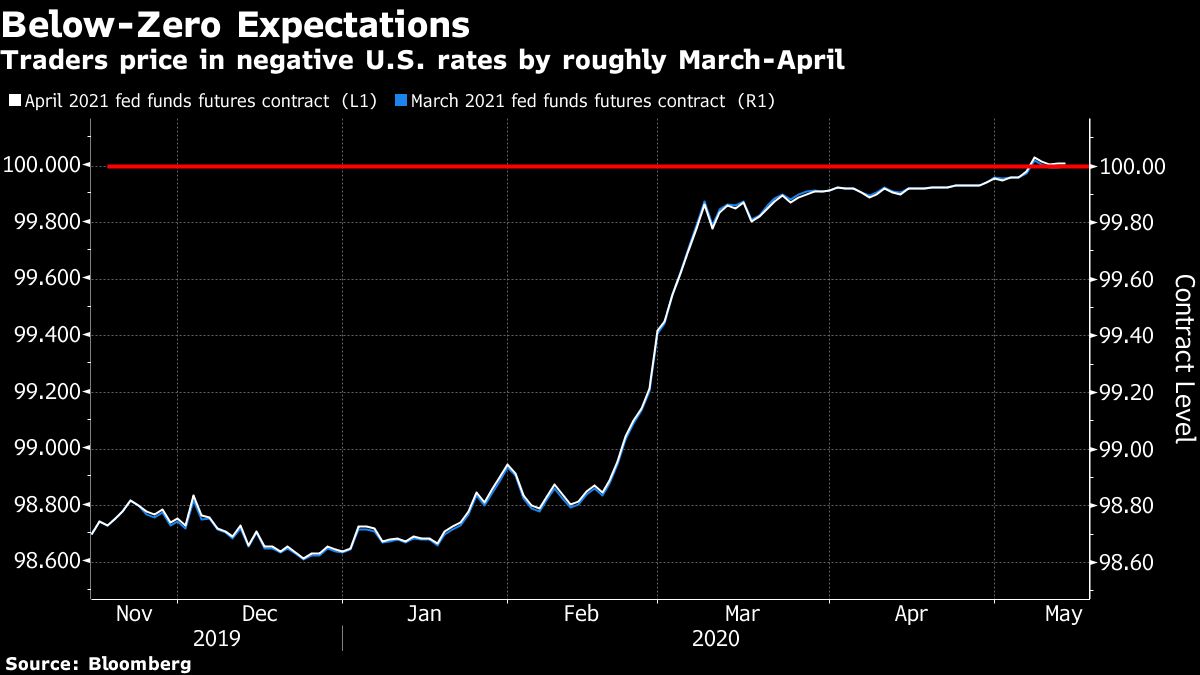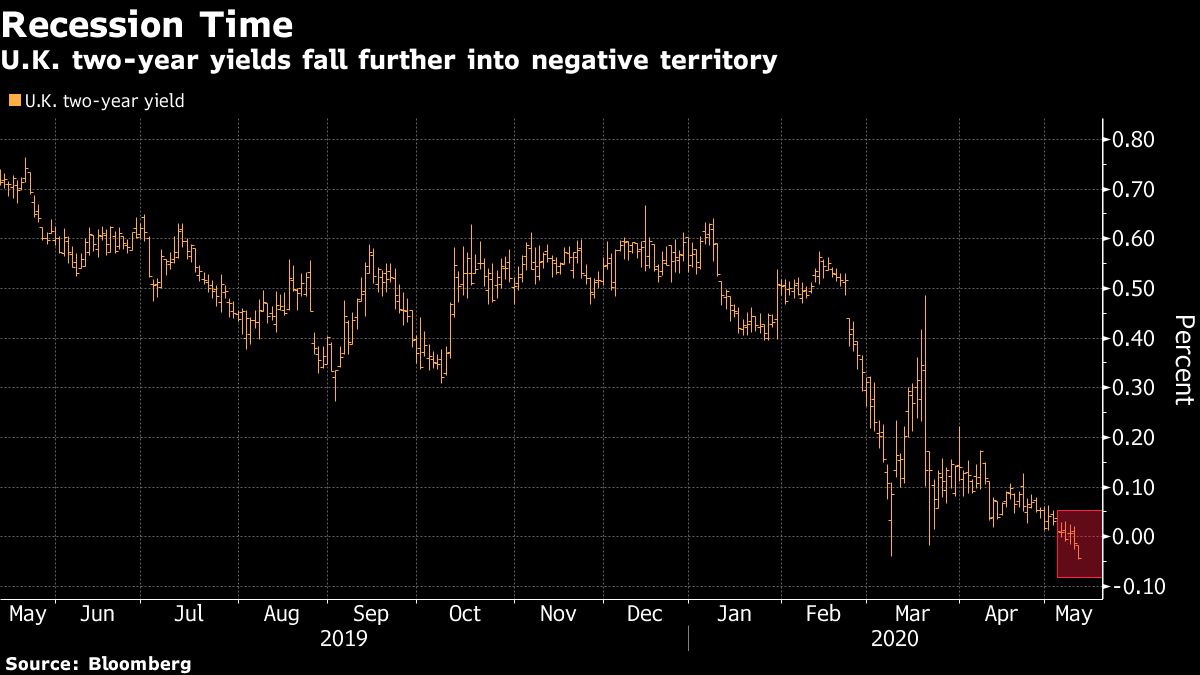Traders around the world are forging ahead with bets on negative interest rates, even as central banks mount a vocal counter-offensive.
Fed funds futures reflected bets for a negative U.S. policy rate for a fifth day, despite Federal Reserve Chairman Jerome Powell's attempts to challenge the prospect Wednesday with assurances that such a move is unlikely. While expectations for a shift moderated slightly after Powell's speech, traders are still prepared for a move during the first half of next year.

Global investors are factoring in a long, difficult road for policymakers trying to get their virus-damaged economies back on track. U.K. traders became the latest to price in sub-zero rates this week, in what would be the first move below zero in British history. Investors in New Zealand also see the benchmark falling through zero—something policymakers in Wellington have openly contemplated—and, in the United States, negative-rate expectations have stayed in place since May 7.
"By reiterating that he and the Fed are not in favor of negative rates, but not ruling them out, Powell left room for those expectations to keep building," said Tony Farren, managing director at broker-dealer Mischler Financial in Stamford, Connecticut. "The market firmly leads the Fed before the Fed leads the market, so I wouldn't be shocked if the market takes us to negative first." That would show up initially in Treasury bills and two-year yields, he said.
Markets are increasingly fixated on the growing list of evidence that shows just how badly the coronavirus has hurt global growth. Powell acknowledged the pain in remarks prepared for a virtual event in Washington by saying the U.S. economy faces unprecedented downside risks that could do lasting damage to households and businesses.
U.S. President Donald Trump said Tuesday the U.S. should receive the "gift" of negative interest rates, after three Fed officials signaled the central bank isn't keen on the idea. Trump has long expressed his desire for the U.S. to be paid to borrow, like Germany.
British Woes
In the U.K., Wednesday's bets were spurred by gross domestic product (GDP) data that showed the nation may be headed for the deepest recession in three centuries. That triggered a surge in demand for U.K. government bonds, or gilts, which are seen as some of the safest assets available. The spree drove two-year gilt yields deeper into negative territory, to a record low.

"There is no compelling reason why yields shouldn't go modestly negative given the parlous economic outlook," said John Wraith, head of U.K. and European rates strategy at UBS Group AG. "More easing is certainly possible."
Money-market swaps, which are used to bet on interest-rate moves, are signaling negative rates in the U.K. for March 2021, after falling almost 2 basis points (bps) to minus 0.007 percent. Two-year gilt yields fell as much as three bps, to minus 0.046 percent.
But there are many reasons why central banks are hesitant to follow the lead of places like the Eurozone and reduce rates below zero.
For example, there's evidence that the European Central Bank's (ECB's) minus-0.5 percent interest rate has eaten into bank profits, and this policy could have a similar effect elsewhere.
"Negative rates would require a bailout of small U.K. banks," said Marc Ostwald, a global strategist at ADM Investor Services. "The same applies in the U.S."
—With assistance from Edward Bolingbroke
© Touchpoint Markets, All Rights Reserved. Request academic re-use from www.copyright.com. All other uses, submit a request to [email protected]. For more inforrmation visit Asset & Logo Licensing.



